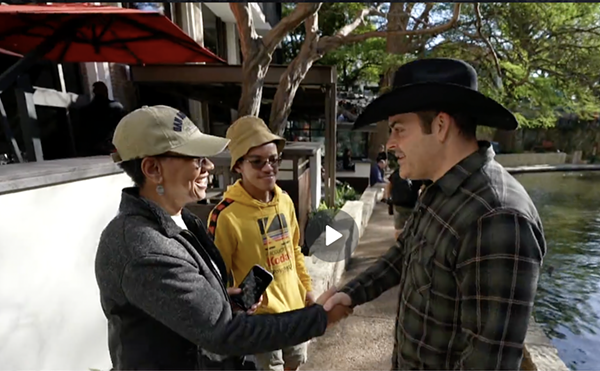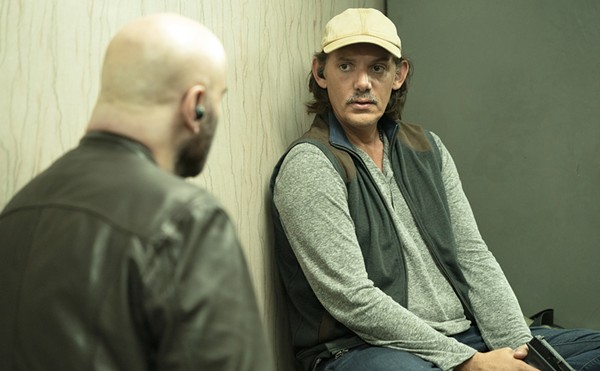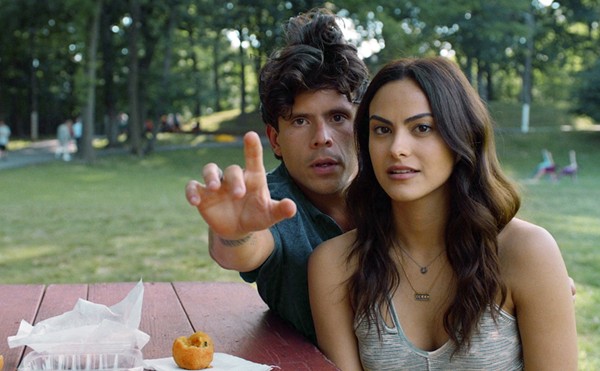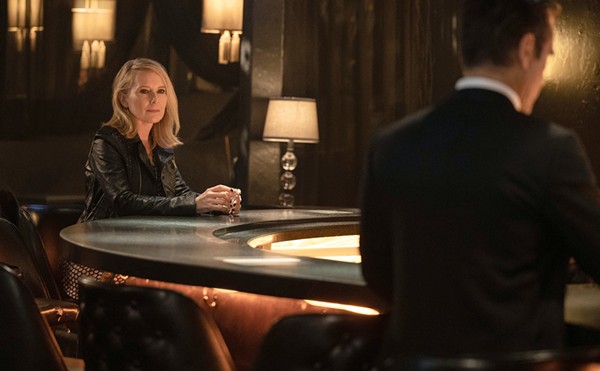On the film's real-life inspiration:
About a dozen years or so ago I met Tom Brown through some mutual friends. He is probably the best tracker in America. He's written about 16 books about nature and the wilderness, he has a school in the Pine Barons in New Jersey, and for many years he has trained the special forces, as Bonham, played by Tommy Lee, does in this film. Tom Brown Jr. has trained the Delta Force and S.E.A.L. Team Six in tracking and evasion techniques, and survival techniques, and he's trained the Special Forces to kill. That was not as interesting to me as when he told me that he had never killed anyone himself. But he was training people to go out and do this.
Occasionally he would find out that the mission was to kill someone who was just politically incorrect, somebody who was not in a declared war with the United States - that started to bother him, and he stopped doing it for a while. When I met him, I tried very hard to come up with a script about Tom and his methods. I tried a couple of times to write a script myself with Tom, and we never really came up with anything that worked for me. Then this script came in from the Griffiths brothers: They had never heard of Tom Brown, they had never met a tracker, but they had zeroed in I think closer to the story than I was ever able to get. So I got involved with that script, and another writer named Art Monterastelli, who I sent out to spend some time with Tom at his survival facility - and we came up with this script.
Tom was there every day. As were two of the best knife fighters in the world, who also train the Special Forces, Rafael Kayanan and Tom Kier. They taught Tommy Lee and Benicio these skills; they also teach the Delta Force and S.E.A.L.s. They were around for literally every move. That's a style of knife fighting that's called Kali - it's of Filipino origin, and these two guys are the foremost practitioners of it. They describe it as "wolverine fighting;" usually a fight like that would last about 30 seconds. It's tough to pull it into three, four minutes - even with two of the most skilled guys who do it, it doesn't last very long. There's not room for a lot of slow-motion or anything like that - it's fast motion. They train guys by baring their chests and actually throwing daggers at them; they have to take sort of bayonettes right on their body in order to train for this. Don't try it at home, that's for sure.
I was fascinated by Tom and his work — it's totally unique — but more importantly, by the sort of guilt trip he was going through when I met him. He dropped out and was called back in to help with Desert Storm.
Asked whether two men Del Toro kills early in the film were actually out to get him, as the character believes, or innocent:
Are they actually hunters, or are they government agents? I don't know. (Laughter) Benicio asked me that many times.
You know, I'll tell you a little bit about how Tommy Lee and Benicio work; they work very differently. Tommy Lee is a guy who has everything together by the time he gets to the set. He has already inhabited the character, so you don't waste a lot of time with him. All I'll tell him is, "You come into the room, you sit down over here, you say a couple of lines, and you walk out." And he goes, "Let me see if I've got that right," and he repeats it, and then he does it. And he invests it with this wonderful humanity that he has as an actor. He's truly one of the best, in my opinion, film actors in the world.
Benicio wants to talk about the character, research it, talk about things that aren't in the script, go into the guy's backstory, what he had for breakfast, why he's doing this, what else he might be doing other than this, and ... as a director, you have to make up stuff! (Laughs) Who the hell knows? I don't know. There's a lot of things on every film I've made that I don't know. I very often will do a film to try to explore it and find out.
But I don't know about those two guys. My guess is that, because of the scopes they have, and the weapons, that they are looking for Benicio (for Hallam). That's his guess too. But he could be wrong: By the beginning of the film, he has obviously taken on a paranoid nature, and so anyone who stumbles across his nest there is a threat. I honestly don't know; there's been a lot of discussion, believe me, about that very question.
What I like to do in the film - even though the structure is simple, the story is simple - there have to be questions that are left to the audience. I feel very strongly about that. The kind of films I enjoy the most raise questions but don't give you the answer. That's inside of you.
About the movie's sparse dialogue:
You know, there's two kinds of films: ones that have a lot of dialogue, and one that don't. There was a lot of preparation. What I like to do is, all of the action scenes grow from a location. I'll get an interest in shooting somewhere, like the Pacific Northwest. And I'll go there with no idea of what the action scenes are going to be, none whatsoever. They're not scripted. And then we go and see a bridge, or see this dam - and with the writer there, and with Tom, and the other people I collaborate with, we start building the movie to the locations. This was true of The French Connection: The chase was never written. It was, you know, one day the producer and I were walking down the street in New York, trying to figure out what kind of chase scene to put in the picture; we just opened ourselves, and the city spoke to us. That's what happens here.
Years ago, there used to be really great dialogue in movies, and those are my favorite films - Citizen Kane, and All About Eve, The Treasure of the Sierra Madre - somehow or other, there is not a lot of great dialogue in pictures today. What I have done over the years, coming down to this film, it to try to refine it down to the simplest kind of storytelling that I possibly can, where the pictures tell a story. And that comes out of having seen a film play in Thailand once: In Thailand, they cannot afford a dubbed version of a film; they can't even subtitle it in Thai. What happens is, a foreign film will run in Thailand, and every ten minutes, or fifteen minutes at the most, a lady or a gentleman will come out, stop the film, and tell the audience what they'd been watching. (Laughter) And I said, I'm going to try to make a film that they'll never have to stop in Thailand! Literally.
I believe that the cinema audience is functionally literate, that they get it. Very often, there are elements that get in the way of you getting it. There are misinterpretations and interpretations; and the only interpretation that I'm interested in is the individual in the audience. You could be as right about something as me. That earlier question; those guys could be hunters or they could be sweepers. I think they're sweepers, and so did Benny - Benny had to play the role thinking that they were sweepers; it could not be left open for him.
About hitches in the production:
I don't know if most of you know it, but we had to shut down the film for seven months because Benicio broke his wrist in the middle of the film. We didn't know, and he didn't know, if he would ever have the use of it again. This was during the first fight scene between Tommy Lee and Benny; we had about seven or eight days to go on the schedule, and this horrible accident happened. We had to stop the film. When you see all those credits at the end for Industrial Light and Magic, the only stuff they had in the picture is, through a lot of this, Benny had to have a brace on his wrist to finish the picture. And we had to remove that digitally. That's what they did. (But he's now fine, and he's making a film with González Iñárritu, the fellow who did Amores Perros - Benny and Sean Penn.) When this happened, with seven or eight days left - and the whole last fight scene to shoot - we didn't know if we could finish the picture. •















